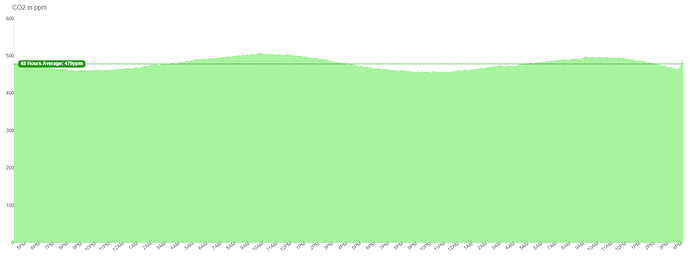It is indeed fascinating! Motivated by this post, I read a bit more about this topic. Some thoughts are shared below in case someone is interested.
I found a conference paper where CO2 uptake by indoor plants was studied, depending on different light conditions. Table 1 emphasises the total of CO2 which can be absorbed by room plants in one day:
https://www.google.com/url?sa=t&source=web&rct=j&opi=89978449&url=https://www.matec-conferences.org/articles/matecconf/pdf/2017/17/matecconf_iscee2017_05004.pdf&ved=2ahUKEwjq7I3XuoiJAxXNTkEAHUSmDy4QFnoECDkQAQ&usg=AOvVaw0wuT7MGYwqw6jSlrROX4_7
A tree absorbs around 10 to 40 kg of CO2 per year, according to EcoTree:
This translates to around 50 g of CO2 per day, which means around 50 g of synthesised sugar (the carbon mass fraction in CO2 is similar as in sugar). Using the ideal gas law, the 50 g of CO2 correspond to roughly 6 liters of CO2. Let’s assume a 3m x 3m x 3m bedroom with a total volume of around 27’000 liters. In this case, 6 liters of CO2 would imply around 200 ppm of CO2 which are absorbed by one tree in one day. Normally, people do not have a tree in their bedroom, so let’s divide by 10 to account for a smaller room plant. This gives us 20 ppm.
My very rough estimate is in the order of magnitude you observed. However, I assumed your bedroom is perfectly sealed, which is inaccurate. And plants not only absorb, but also emit CO2 (day and night). They synthesise sugar for a reason => to use it. The 20 ppm potentially overestimated the net CO2 uptake of a room plant in a bed room. I suspect your CO2 pattern is influenced by indoor as well as outdoor plants: the individual contribution depends on the number of outdoor and indoors plants, the light conditions and how well your house is sealed.
